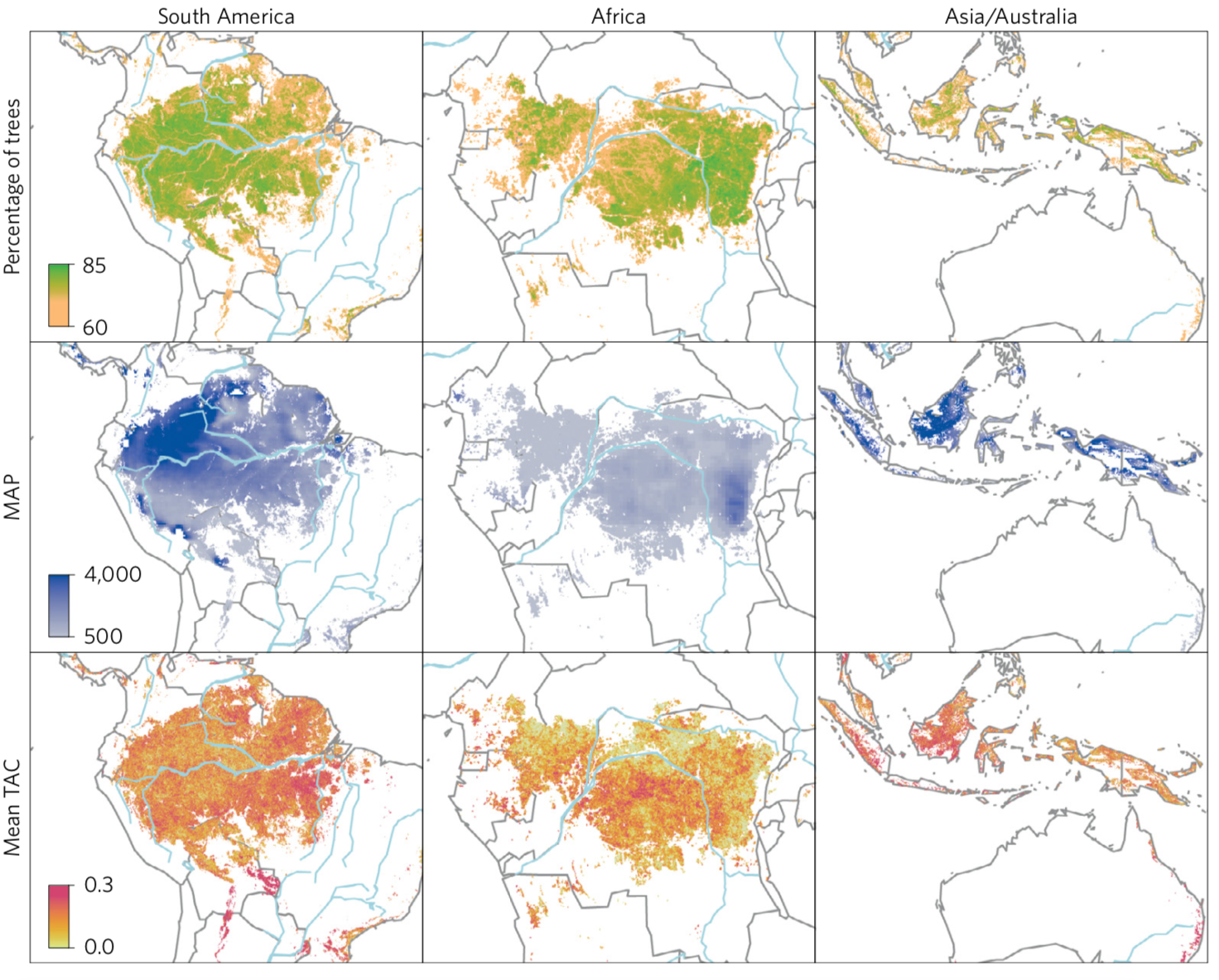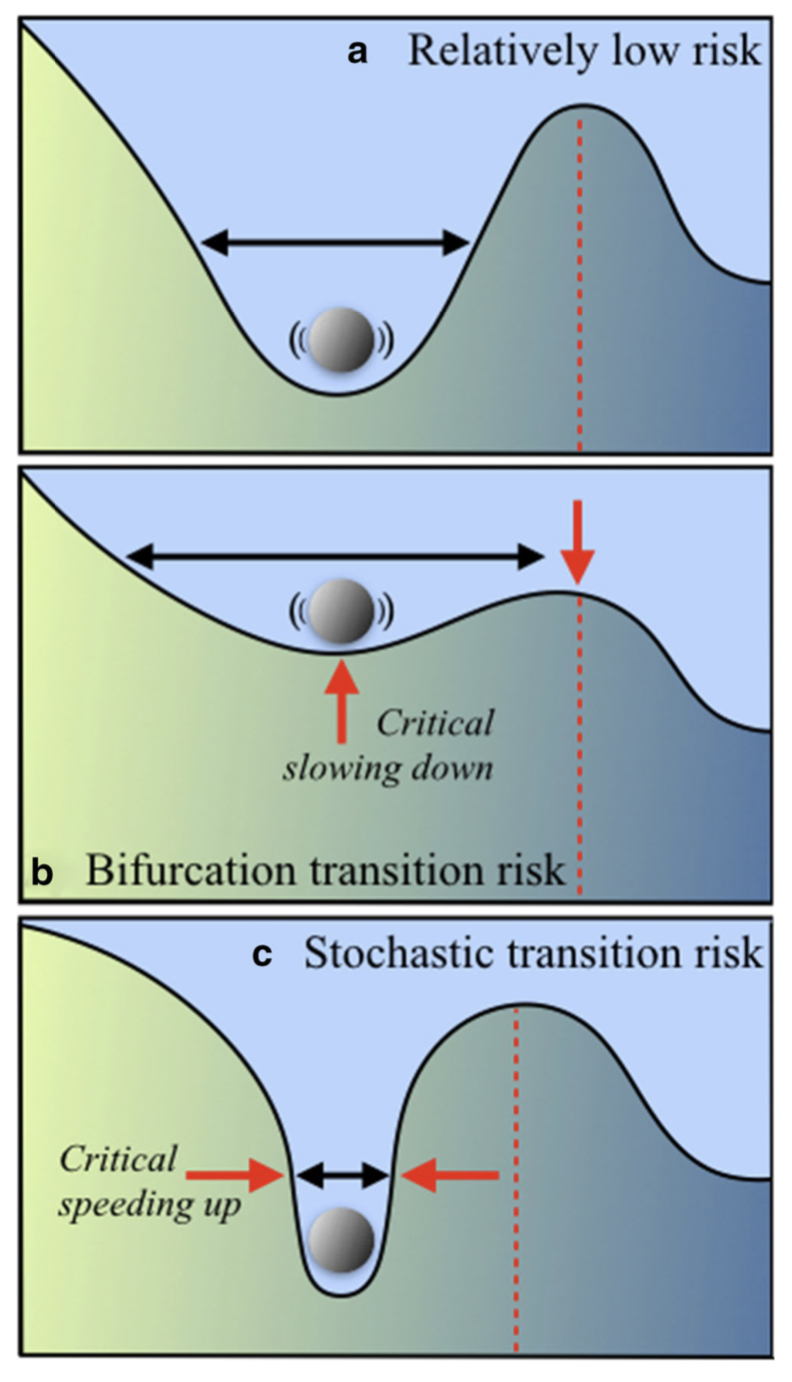- Terrestrial:
- Gross primary productivity (2001:2018)
- Ecosystem respiration (2001:2018)
- Leaf area index (1994:2017)
- Marine:
- Chlorophyll A (1998:2018)
- >1M pixels, weekly obs, 0.25 degree grid resolution
Juan C. Rocha
Enviromental Research Letters (2022)

Regime shifts are large, abrupt and persistence critical transitions in the function and structure of (eco)systems
Regime shifts are large, abrupt and persistence critical transitions in the function and structure of (eco)systems
Regime shifts are large, abrupt and persistence critical transitions in the function and structure of (eco)systems
Depends on our ability to observe and measure resilience
Dakos et al. 2012. PLoS ONE
Kéfi et al. 2014. PLoS ONE
Titus & Watson 2020 J Theor Ecol
Fractal dimension
West, Geoffrey. 2017. Scale
Gneiting et al. 2012. Statistical Science.
![]()
The generic resilience indicators do not necessarily align with critical slowing down or speeding up theories

In the absence of ground truth, if \(\Delta\) is > 95% or < 5% of the distribution is considered a signal of resilience loss
Gross primary productivity 
~30% of ecosystem show symptoms of resilience loss, boreal forest and tundra particularly strong signals
Chlorophyll A 
~25% of ecosystem show symptoms of resilience loss, Easter Indo-Pacific and Tropical Eastern Pacific Oceans particularly strong signals


Robustness tests: permutations, auto-regressive models


Questions?
email: juan.rocha@su.se
twitter: @juanrocha
slides: juanrocha.se/presentations/resilience_loss_2022
paper: Rocha, JC. 2022. Ecosystems are showing symptoms of resilience loss. ERL
Stockholm Resilience Centre
Subscribe to our newsletter at www.stockholmresilience.org/subscribe



Verbesselt J, et al. Remotely sensed resilience of tropical forests. 2016.
Limitations: fail when dynamics are driven by stochastic processes or when signals have too much noise

West, Bruce. 2010. Frontiers Physiology
Gneiting et al. 2012. Statistical Science.
Terrestrial ecosystem respiration 
~30% of ecosystem show symptoms of resilience loss, boreal forest and tundra particularly strong signals

